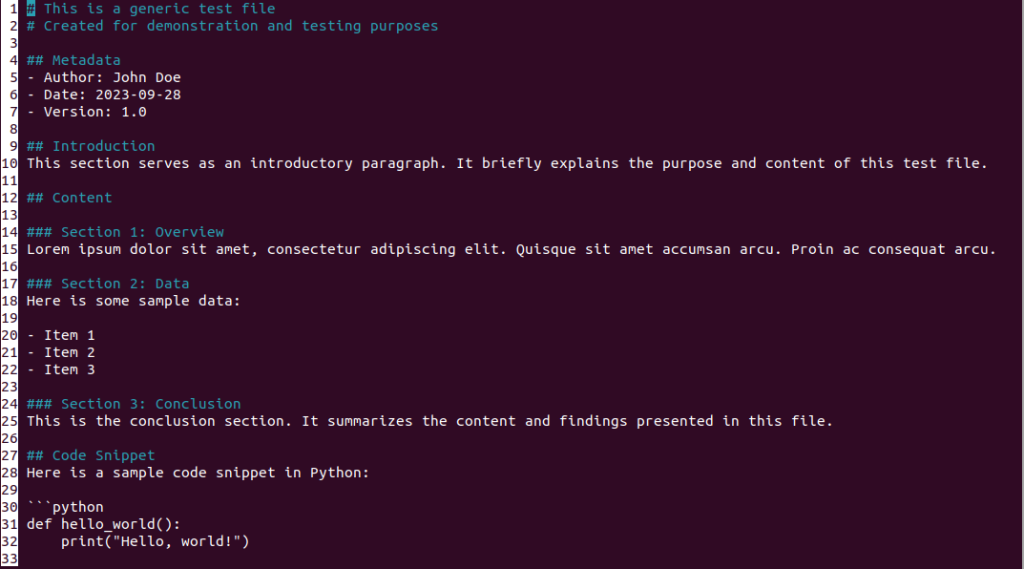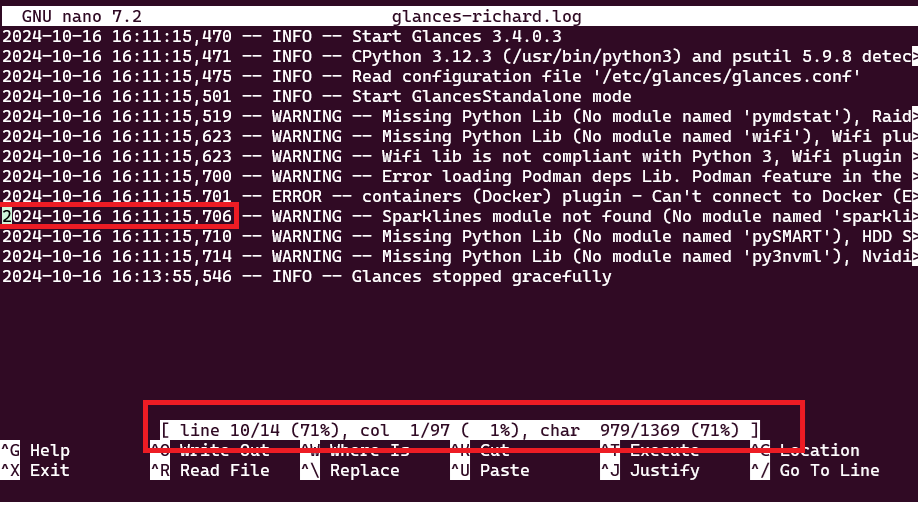How to display Line Numbers in Nano, Vi and VIM
Displaying line numbers in text editors like Nano, Vi, and Vim can be a crucial feature for developers, system administrators, and technical writers. These text editors are available on Linux. It aids in navigation and makes it easier to reference specific lines of code or text. Below is a detailed procedure for enabling line numbers in each of these text editors.
NANO
Displaying Line Numbers in Nano
- Open the Nano Editor: Launch your terminal and type
nanofollowed by the name of the file you wish to edit. For example:
nano example.txt- Access the Nano Menu: Once the editor is open, you’ll notice a menu at the bottom of the screen. This menu contains various commands prefixed by the caret symbol (
^), which represents theCtrlkey. - Enable Line Numbers: To display line numbers, press
Alt+Shift+#. This will toggle line numbers on or off. - Save Changes: To save any changes you’ve made to the file, press
Ctrl+O, then pressEnter. - Exit Nano: To exit the Nano editor, press
Ctrl+X.

Top Tip for Nano
Did you know you can quickly view which line you are on in Nano by pressing CRTL+C anywhere in your file? For example:

Want to make setlinenumbers persistent?
1.Edit .nanorc
You can use Nano itself to edit this configuration file. Open your terminal and type:
nano ~/.nanorc This will open the nanorc file in your home directory (represented by ~). If the file doesn’t exist, Nano will create it for you.
2. Add the line:
In the Nano editor, add the following line:
set linenumbersVI
Displaying Line Numbers in Vi
- Open the Vi Editor: In your terminal, type
vifollowed by the name of the file you want to edit. For instance:
vi example.txt- Enter Command Mode: By default, Vi starts in “Normal” mode. To enter “Command” mode, press
Esc. - Enable Line Numbers: In “Command” mode, type
:set numberand pressEnter. This will display line numbers along the left-hand side of the editor. - Save and Exit: To save changes and exit Vi, type
:wqand pressEnter.

VIM
Displaying Line Numbers in Vim
- Launch Vim: Open your terminal and type
vimfollowed by the name of the file you wish to edit. For example:
vim example.txt- Switch to Command Mode: Vim starts in “Normal” mode. Press
Escto switch to “Command” mode. - Activate Line Numbers: In “Command” mode, type
:set numberand pressEnter. This will enable line numbers. - Persistent Line Numbers: If you want to make this setting permanent, you can add the
set numbercommand to your Vim configuration file. To do this, open your.vimrcfile by typingvim ~/.vimrcand add the lineset number. - Save and Close: To save your changes and exit Vim, type
:wqand pressEnter.
Thanks for taking the time to read this article. if you have any questions or feedback, please write in the comment section below.




Recent Comments